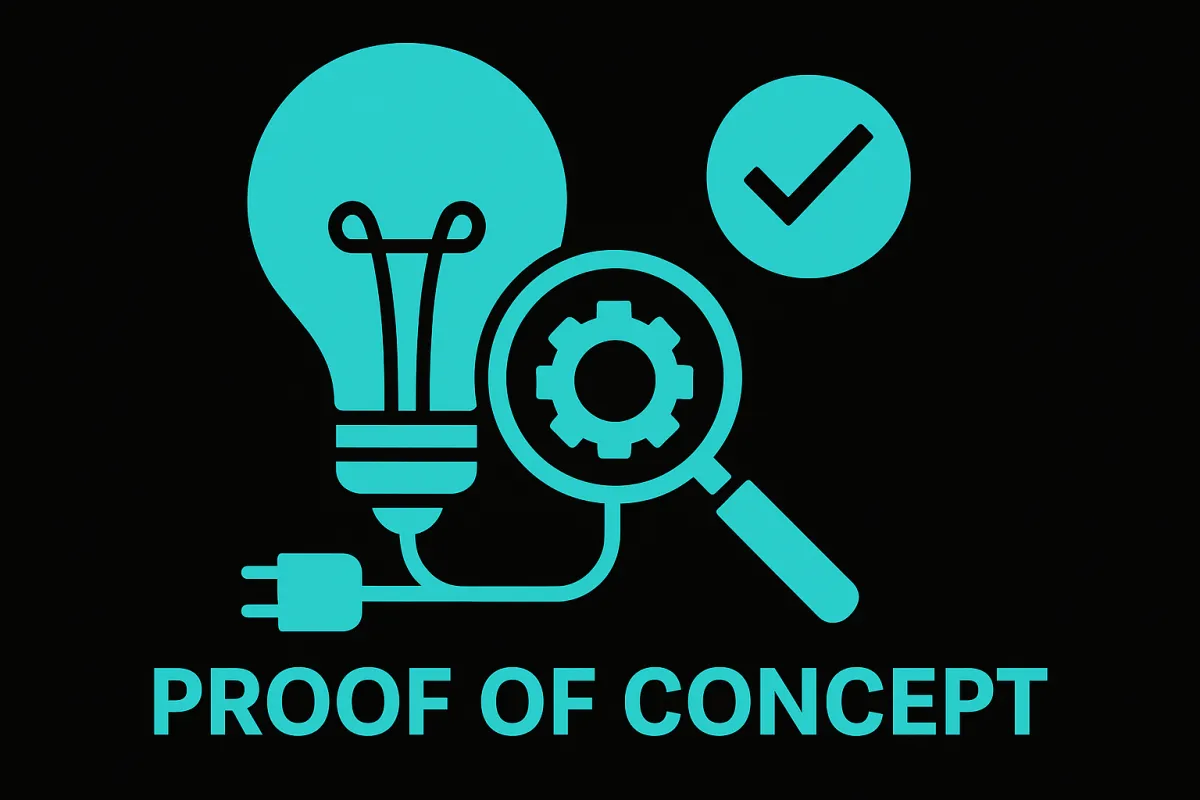
🧠 Proof of Concept: The Entrepreneur’s Cheat Code for Avoiding Expensive Mistakes
🧠 Proof of Concept: The Entrepreneur’s Cheat Code for Avoiding Expensive Mistakes
(Because winging it is not a business strategy.)
Let’s play a game.
Imagine you wake up one morning, fueled by caffeine and delusion, and say:
“I’m starting a business. Everyone’s gonna love it.”
Three months later, you’ve built a website, ordered 500 custom boxes, printed T-shirts, and paid a designer $600 for a logo that looks like an alien emoji.
Then… nothing.
Crickets.
Not even your mom’s buying.
Congratulations — you’ve just experienced the most expensive lesson in entrepreneurship: you forgot to test your idea.
That’s where Proof of Concept (POC) swoops in like a business superhero. 🦸♂️
It’s the cheat code that keeps you from turning your passion project into a very well-decorated money pit.

💡 What the Heck Is Proof of Concept?
Proof of Concept is your business idea’s audition.
It’s the “let’s see if this actually works” phase — before you blow your savings or max out your Amex.
In plain English:
It’s testing your idea on a small scale to see if real humans will pay real money for it.
Not your friends.
Not your cousin who “supports everything you do.”
Actual paying customers.
It’s not about being perfect. It’s about being right enough to know it’s worth going all-in.
💬 Think of it like dating: you don’t marry someone after one good dinner — you test compatibility first. Proof of Concept is that first date with your business idea.
🧾 Why Proof of Concept Is the Entrepreneur’s Cheat Code
Because, my friend, it saves you from these three deadly business sins:
1. Falling in Love with the Wrong Idea
Just because you love it doesn’t mean the market does.
(Harsh, but someone had to say it.)
A proof of concept keeps your ego in check. It forces you to ask:
“Do people actually want this… or am I just obsessed with my own idea?”
2. Building Too Much, Too Soon
Ah yes, the classic: “I’m gonna build an app.”
Fast forward 9 months — you’ve spent $10,000 and haven’t launched a single thing.
Meanwhile, someone else validated a similar idea with a Google Form and started making money in three weeks.
💬 Pro Tip: You don’t need to build everything to prove your concept. You just need to prove people care.
3. Wasting Time and Money Like It’s a Hobby
Testing early means you learn faster.
And when you learn faster, you waste less time building something nobody wants.
Entrepreneurs don’t fail because they’re dumb.
They fail because they build in silence, launch in shock, and realize too late that no one asked for what they made.
💬 Proof of Concept = “Fail cheap, fail fast, adjust quickly.”
🧩 Okay, But How Do You Actually Do It?
Great question. Let’s break it down, step by step, before you go full Shark Tank in your garage.
Step 1: Ask “Would Someone Actually Pay for This?”
Forget likes, shares, and “omg I love that idea!”
The only vote that matters in business is a credit card swipe.
💬 Mini-test idea:
Offer a pre-order. Launch a landing page. Put your service on Fiverr or Etsy.
If people buy it — even one — that’s your proof of concept.
If nobody bites, congrats — you just saved yourself thousands in therapy and web hosting fees.
Step 2: Create a Minimum Viable Version (MVP)
Not to be confused with “Most Valuable Player.”
This MVP is the simplest possible version of your product or service that still delivers results.
Selling cookies? Bake one batch, not a bakery.
Starting a consulting business? Sell one-hour sessions before you build a course.
Building an app? Start with a demo video or a mockup — not a $50K dev bill.
💬 Rule of thumb: If it takes longer than two weeks or more than $200 to test, you’re overbuilding.
Step 3: Get Real Feedback (and Be Ready to Cry a Little)
Once you’ve tested it, ask customers for honest feedback.
Not “Did you like it?” — that’s too polite. Ask:
“Would you buy it again?”
“What almost stopped you from buying?”
“If this disappeared tomorrow, would you care?”
If they shrug, tweak it.
If they say, “I’d be mad if this went away,” congratulations — you’ve found your proof of concept.
💬 Bonus Round: The Proof of Concept Hall of Fame
Every big company you know started with a tiny test:
Dropbox: Made a video demo before building the tech.
Airbnb: Rented air mattresses in their apartment before buying real furniture.
Zappos: Took photos of shoes from stores and sold them online before having inventory.
They didn’t start big — they started smart.
⚙️ Your Proof-of-Concept Checklist
✅ Someone’s already paying for something similar.
✅ You can explain your idea in one sentence without crying.
✅ You’ve tested it with real customers, not just friends.
✅ You’ve made at least one sale (even a small one).
✅ You can scale it without selling your soul or your sofa.
If you can check 3 or more of those, you’ve officially earned your Entrepreneur Badge of Sanity. 🥇
🎯 Final Thought
You don’t need a business plan, a $10,000 website, or a custom neon sign to start.
You just need proof that your idea works in the real world.
Because here’s the truth:
Proof of Concept is your shield against broke dreams.
So, before you build the empire, test the lemonade stand.
If it sells, then — and only then — go full Beyoncé in business mode.
Because smart entrepreneurs don’t bet the farm.
They test the soil first. 🌱
